Takashi Murakami’s Dubai debut pops with colour, nostalgia and darker undertones
Nadine Khalil interviews Takashi Murakami ahead of his first exhibition in the UAE, at Perrotin’s ICD Brookfield pop-up space, as the gallery also launches its first permanent Middle Eastern outpost
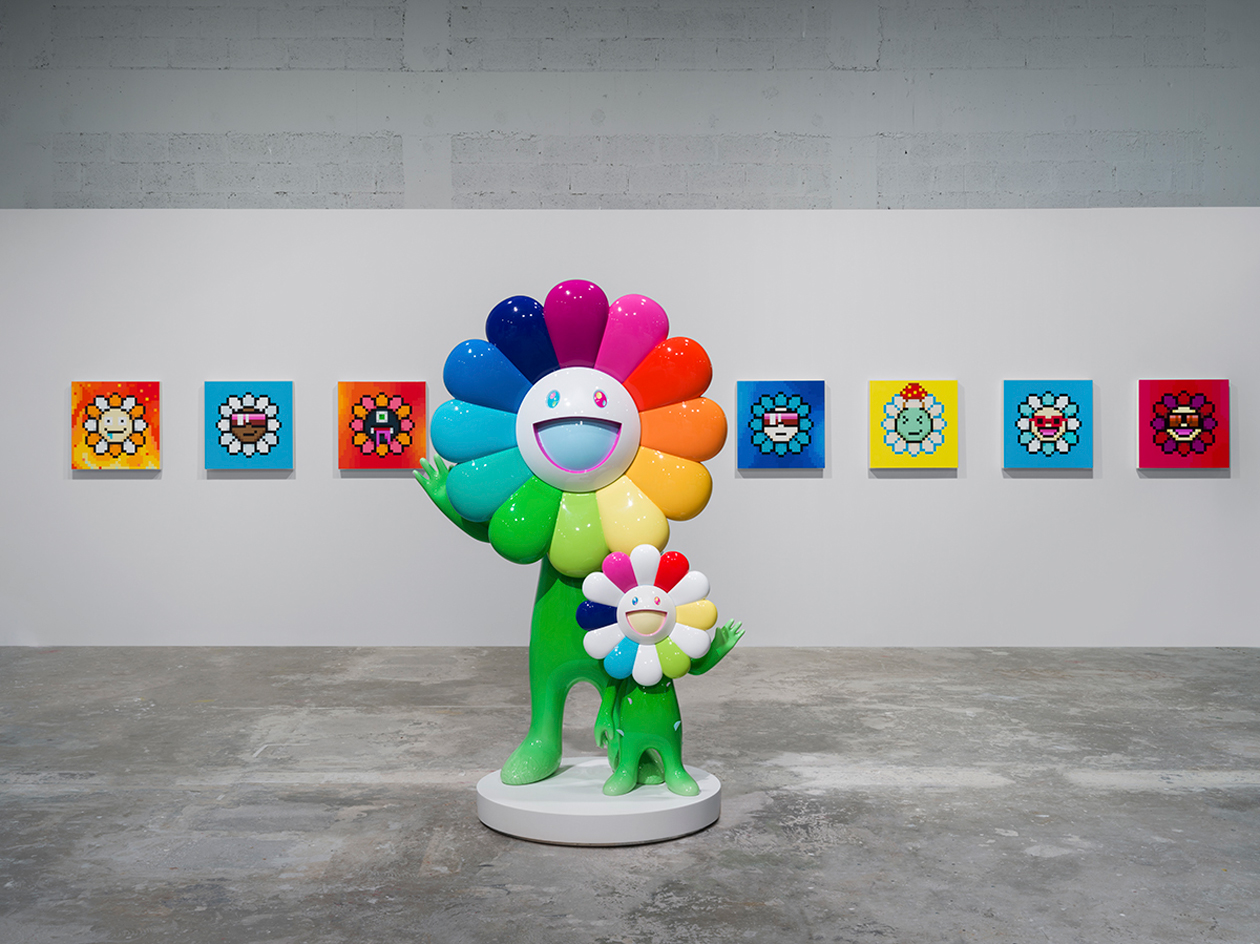
Entering Takashi Murakami’s first exhibition in Dubai feels like visiting a store for hybrid emojis in 3D. On a frontal wall is a new set of heavily pixelated paintings of the artist’s shiny, happy Murakami.Flower series, which have a retro video-game feel. On plinths are DOB sculptures in bow-ties and candy colours (Mr DOB is a prominent mouse-like avatar in the cast of characters the artist created in 1993). In the centre is Together with the Flower Plant and Child featuring two waving plants (one clearly the adult) with wide-mouthed smiles, green bodies and petals the colour of rainbows.
Murakami’s exhibition is taking place at Perrotin’s pop-up space at ICD Brookfield Place, alongside a corresponding show by Jason Boyd Kinsella. It’s part of a partnership with ICD’s Malak Abu-Qaoud and coincides with the launch of Perrotin’s new permanent Middle Eastern outpost, in Dubai’s financial district. The accessibility of Murakami’s visual language paired with Abu-Qaoud’s community-driven approach as an art manager makes this collaboration a good fit.
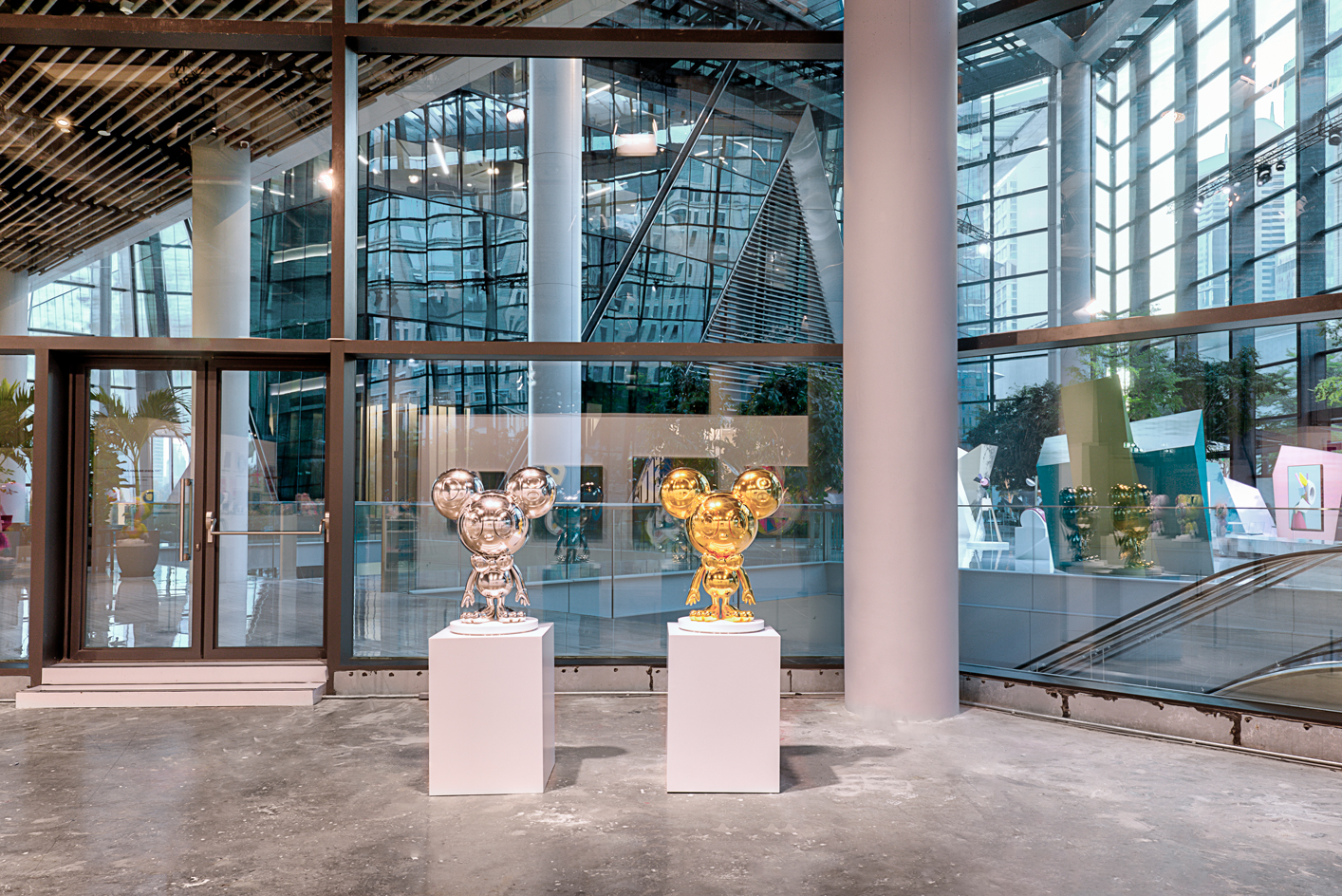
Takashi Murakami, exhibition view at Perrotin Dubai, ICD Brookfield Place, from 25 November 2022 to 28 January 2023
The wild popularity of the technicolour iterations of Murakami’s DOB works comes from their recognisable references to several animated characters, such as the Japanese robot-cat Doraemon, Sonic the Hedgehog, and Mickey Mouse. ‘I started out as an artist by wanting to draw animations,’ Murakami says. The impact of otaku, or the obsession with video games, manga, animation and science fiction, is ever-present in his work as the kind of Japanese geeky subculture that engenders a major trend. ‘You can really feel the tempo of a place like Japan through its manga culture,’ he continues. ‘When I became a famous artist in New York, I thought I needed to go back to honest, Japanese culture.’ Yet Murakami understood the power of Pop Art early on when he became part of the New York City art scene in the 1990s. His ability to combine this awareness with craft via Nihonga, the lavish Japanese traditional painting technique he studied in university, is how he stakes his claim using the language of consumerism and youthful nostalgia.
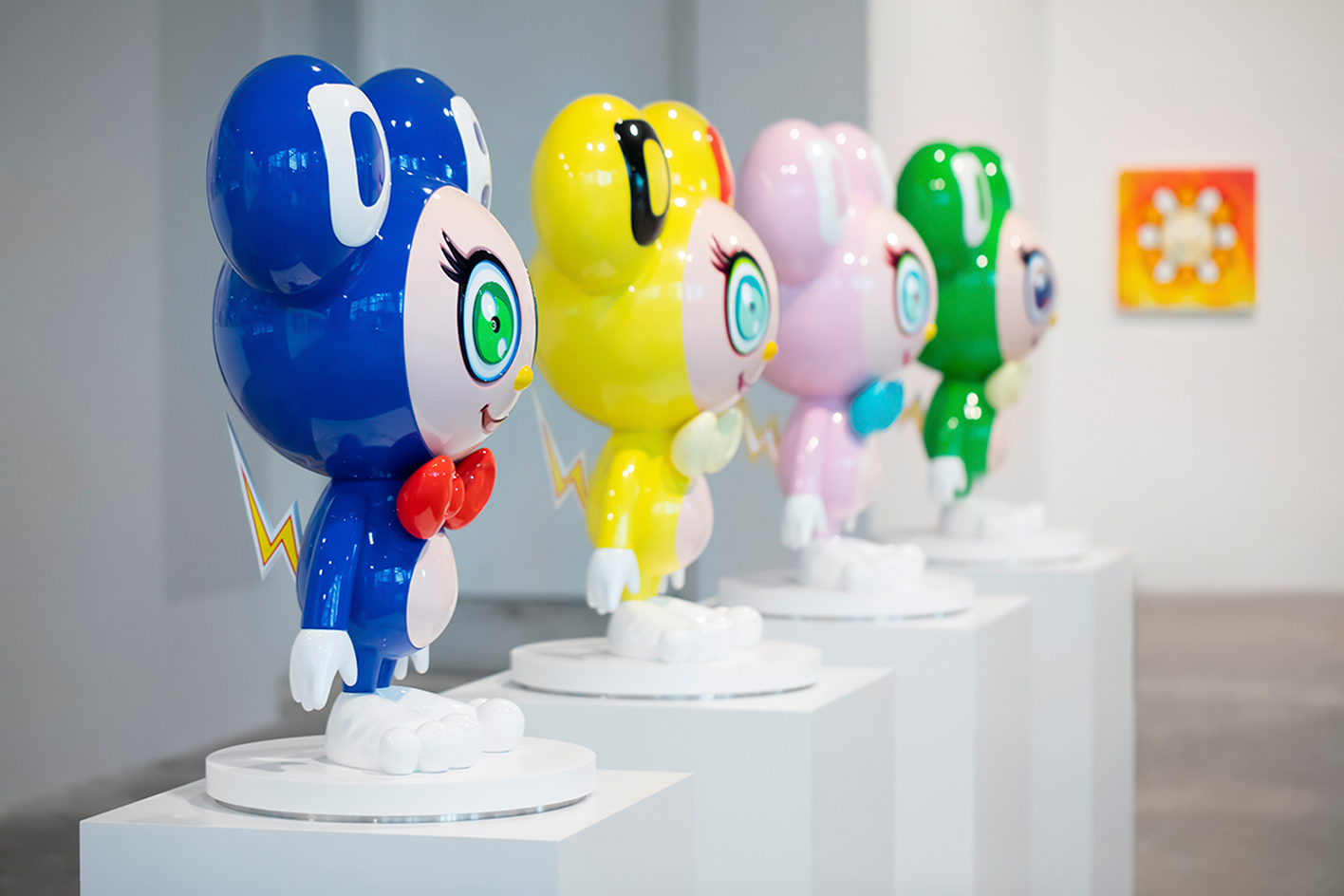
Takashi Murakami, exhibition view at Perrotin Dubai, ICD Brookfield Place
Murakami’s ‘Superflat’ ethos of levelled pictorial space and stylised figures has become a signature approach, drawing from kawaii, or the aesthetic of ‘cuteness’ in postwar Japan. This controversial, Neo-Confucian notion of docile, childlike women as illustrations of doe-eyed girls during the Edo period was later popularised by iconic characters such as Hello Kitty. But while the result is that Murakami’s works are often read as emotionally flat, with an optimism that is childlike, a closer look reveals darker undertones in the pointy teeth or refracted faces of DOB Kaiju Monster in the exhibition, undoubtedly inspired by the Japanese kaiju or ‘strange beast’ motif prevalent in a film and TV genre.
Murakami has often explained that Superflat responds to Japan’s post-Second World War condition, earthquakes and the 2011 nuclear disaster in Fukushima. In Dubai, he says, ‘The Japanese people have experienced a lot of natural disasters. Perhaps the [1945] atomic bomb [in Hiroshima and Nagasaki] was seen as that kind of disaster too. At the same time, we still have fear. Maybe my characters look like happiness, but in my head, it’s not necessarily that. There’s this idea hiding in the background.’
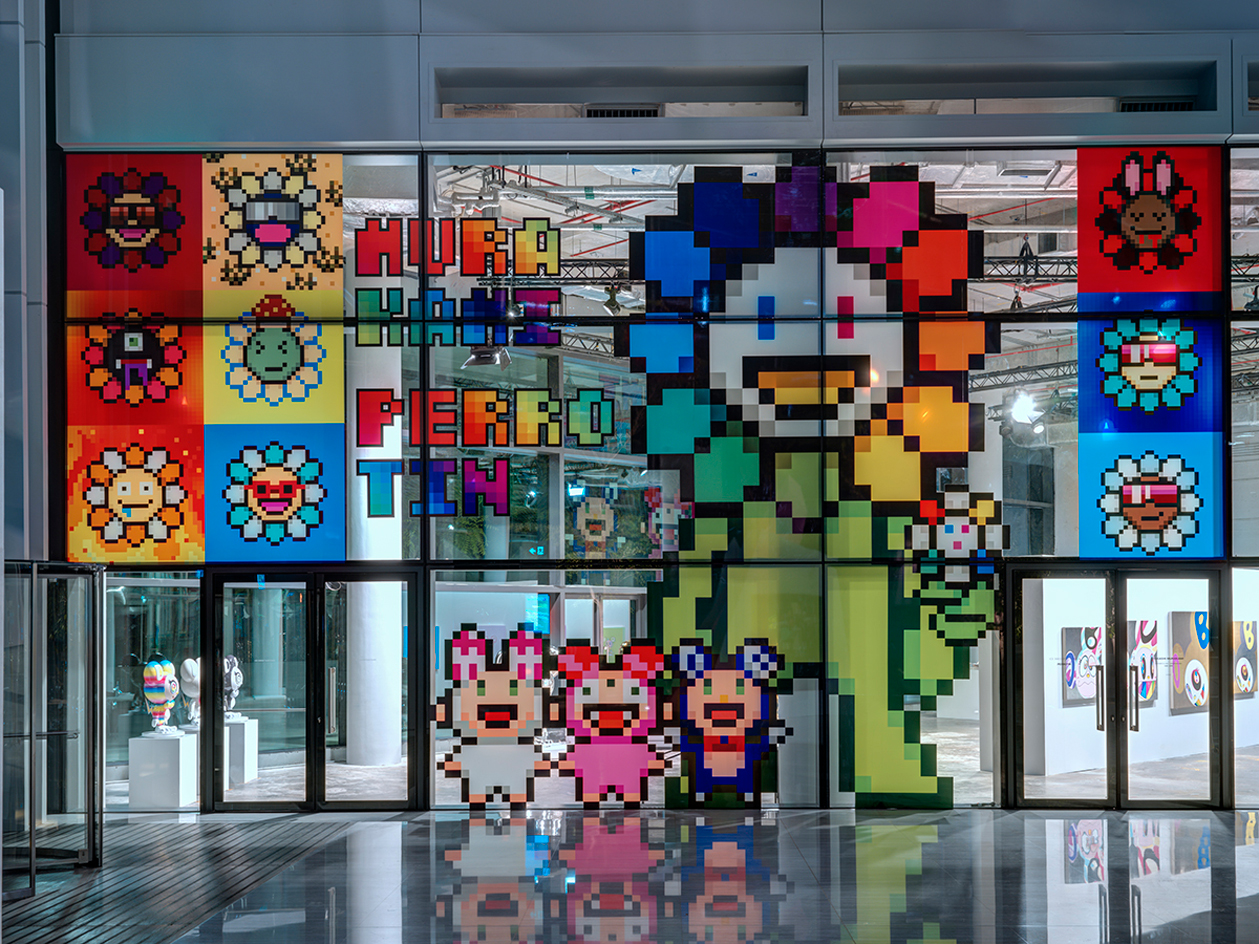
Takashi Murakami, exhibition view at Perrotin Dubai, ICD Brookfield Place
His anthropomorphic cartoon-like figures may be an attempt to seek subjects that have been left out of art history, but their rich references are sometimes lost on the viewer. For example, the 108 backgrounds for the Murakami.Flowers series are based on the Buddhist principle of bonnō – or the number of earthly temptations that sully the mind. To an uninformed eye, this could read as the 108 colours of advertising.
The most striking work in the exhibition is on the way out: a 2017 miniature model of Murakami himself, cloaked in an Oriental robe, each hand taking on a mudra (a yogic gesture symbolic in Hindu and Buddhist ritual). Murakami Mini Arhat, modelled on the clairvoyant disciples of the Buddha, is a satirical self-portrait that has Murakami’s face split in two with a double emerging in between. Four eyes imply 360-degree vision and the eerie omniscience of an artist who has long understood the intersections between art and commerce.
Receive our daily digest of inspiration, escapism and design stories from around the world direct to your inbox.
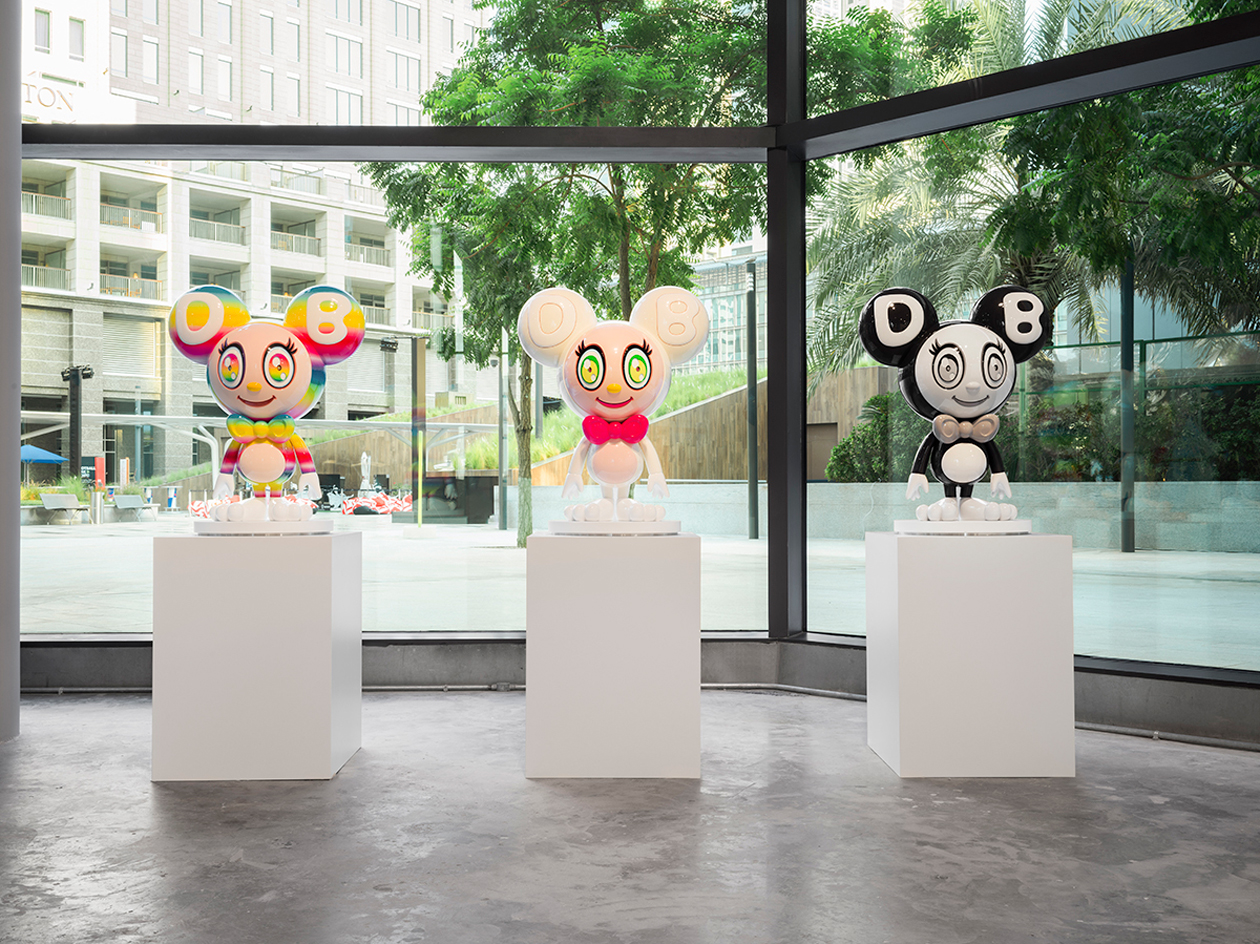
Takashi Murakami, exhibition view at Perrotin Dubai, ICD Brookfield Place
Takashi Murakami at Perrotin Dubai, ICD Brookfield Place, until 28 January 2023. perrotin.com
-
 A tale of two Audis: the A5 saloon goes up against the A6 Avant e-tron
A tale of two Audis: the A5 saloon goes up against the A6 Avant e-tronIs the sun setting on Audi’s ICE era, or does the company’s e-tron technology still need to improve?
-
 Inside Christian de Portzamparc’s showstopping House of Dior Beijing: ‘sculptural, structural, alive’
Inside Christian de Portzamparc’s showstopping House of Dior Beijing: ‘sculptural, structural, alive’Daven Wu travels to Beijing to discover Dior’s dramatic new store, a vast temple to fashion that translates haute couture into architectural form
-
 A music player for the mindful, Sleevenote shuns streaming in favour of focused listening
A music player for the mindful, Sleevenote shuns streaming in favour of focused listeningDevised by musician Tom Vek, Sleevenote is a new music player that places artist intent and the lost art of record collecting at the forefront of the experience
-
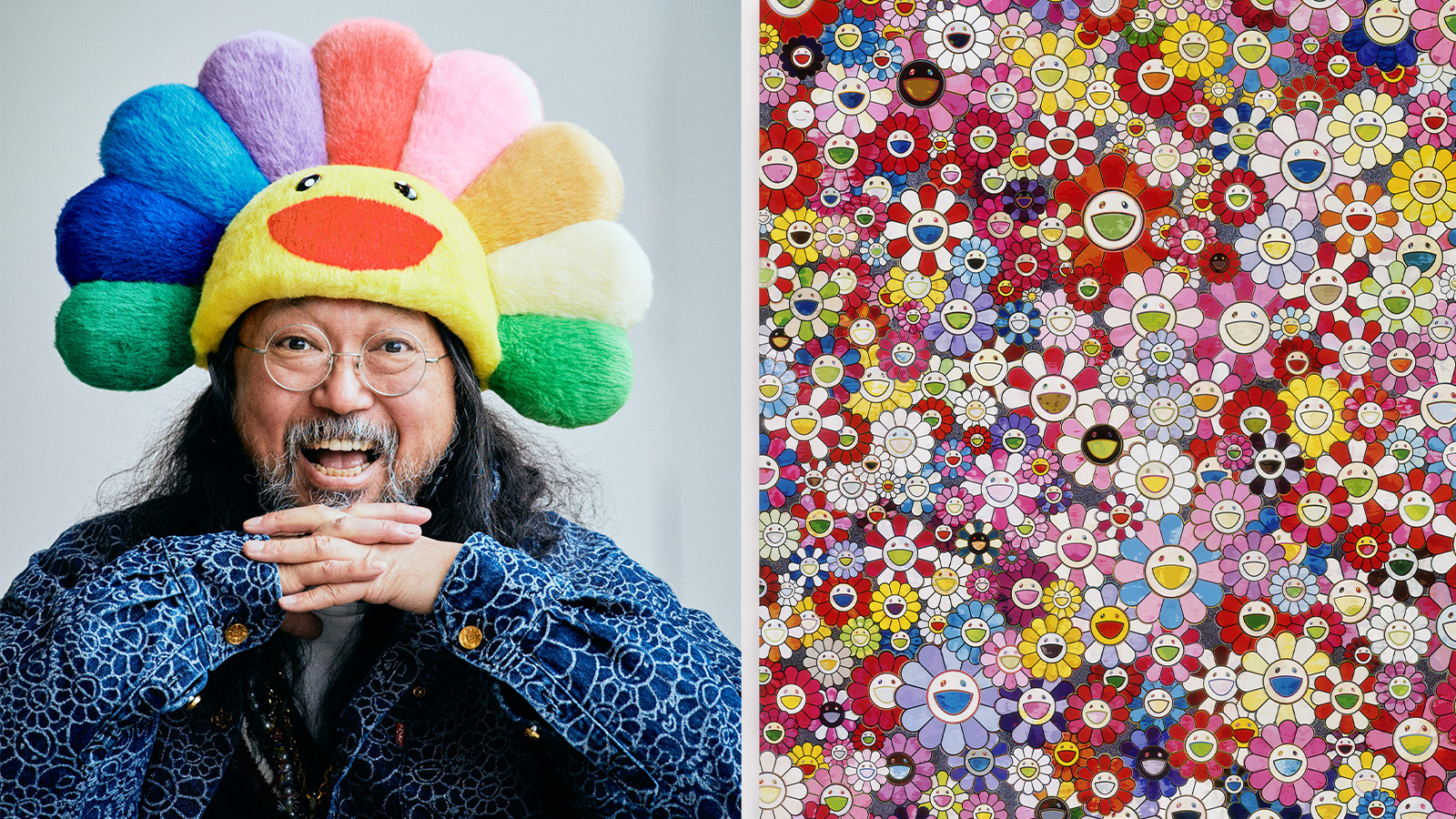 A major Takashi Murakami exhibition sees the world in kaleidoscopic colour
A major Takashi Murakami exhibition sees the world in kaleidoscopic colourThe Cleveland Art Museum presents 'Takashi Murakami 'Stepping on the Tail of a Rainbow', exploring outrage and escapist fantasy
-
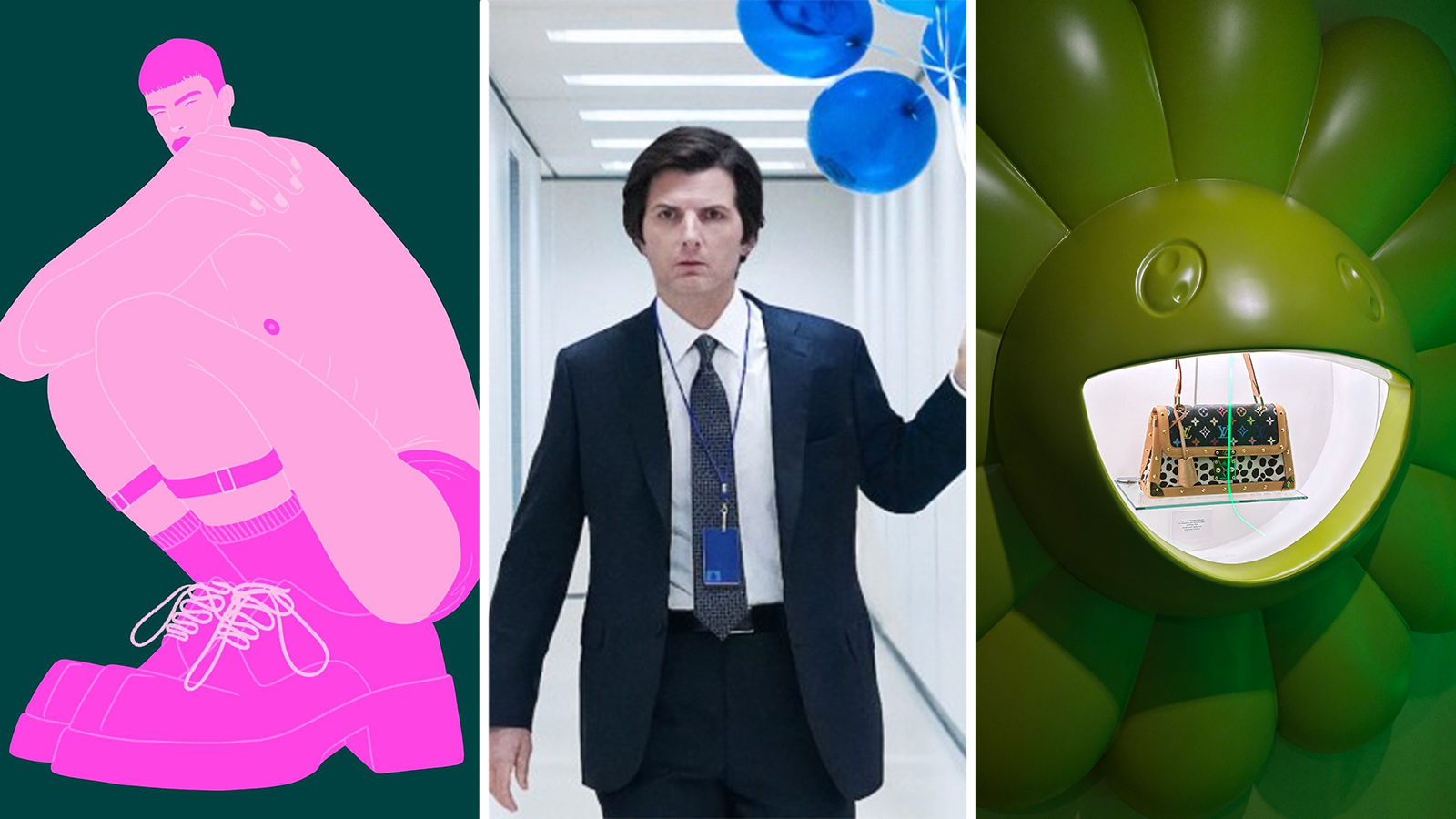 Out of office: what the Wallpaper* editors have been doing this week
Out of office: what the Wallpaper* editors have been doing this weekIt's been a busy start to the year for the Wallpaper* team. Heres their pick of the week across fashion, food and film
-
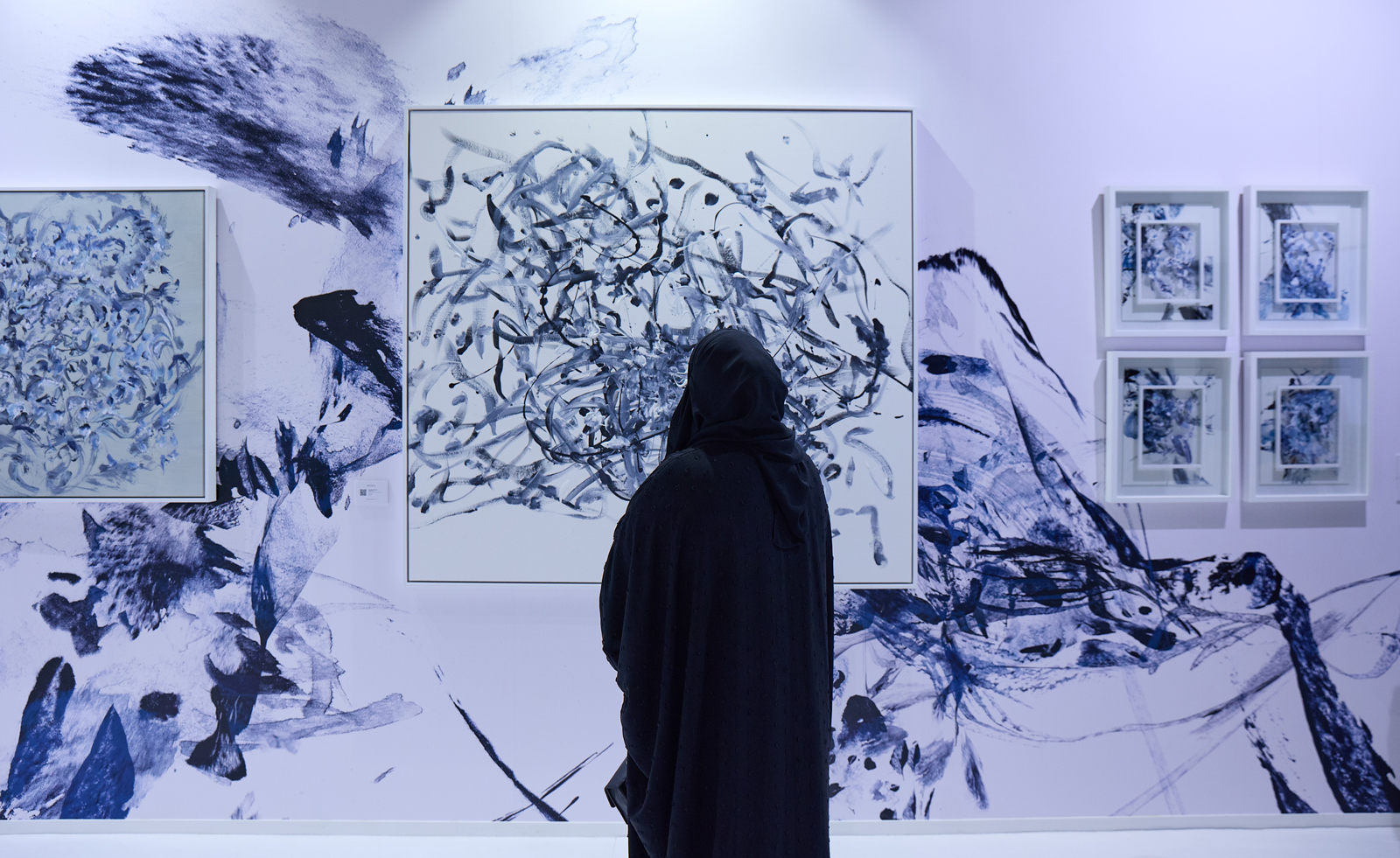 Art Dubai 2024 considers community and belonging
Art Dubai 2024 considers community and belongingWhat to see at Art Dubai 2024 this weekend, an oasis of art, design and ideas
-
 Unseen images by JK Bruce-Vanderpuije are a glimpse of life in 20th-century Ghana
Unseen images by JK Bruce-Vanderpuije are a glimpse of life in 20th-century GhanaLate Ghanaian photographer JK Bruce-Vanderpuije’s works are on show at Efie Gallery in Dubai, offering a vision of a nation across the decades
-
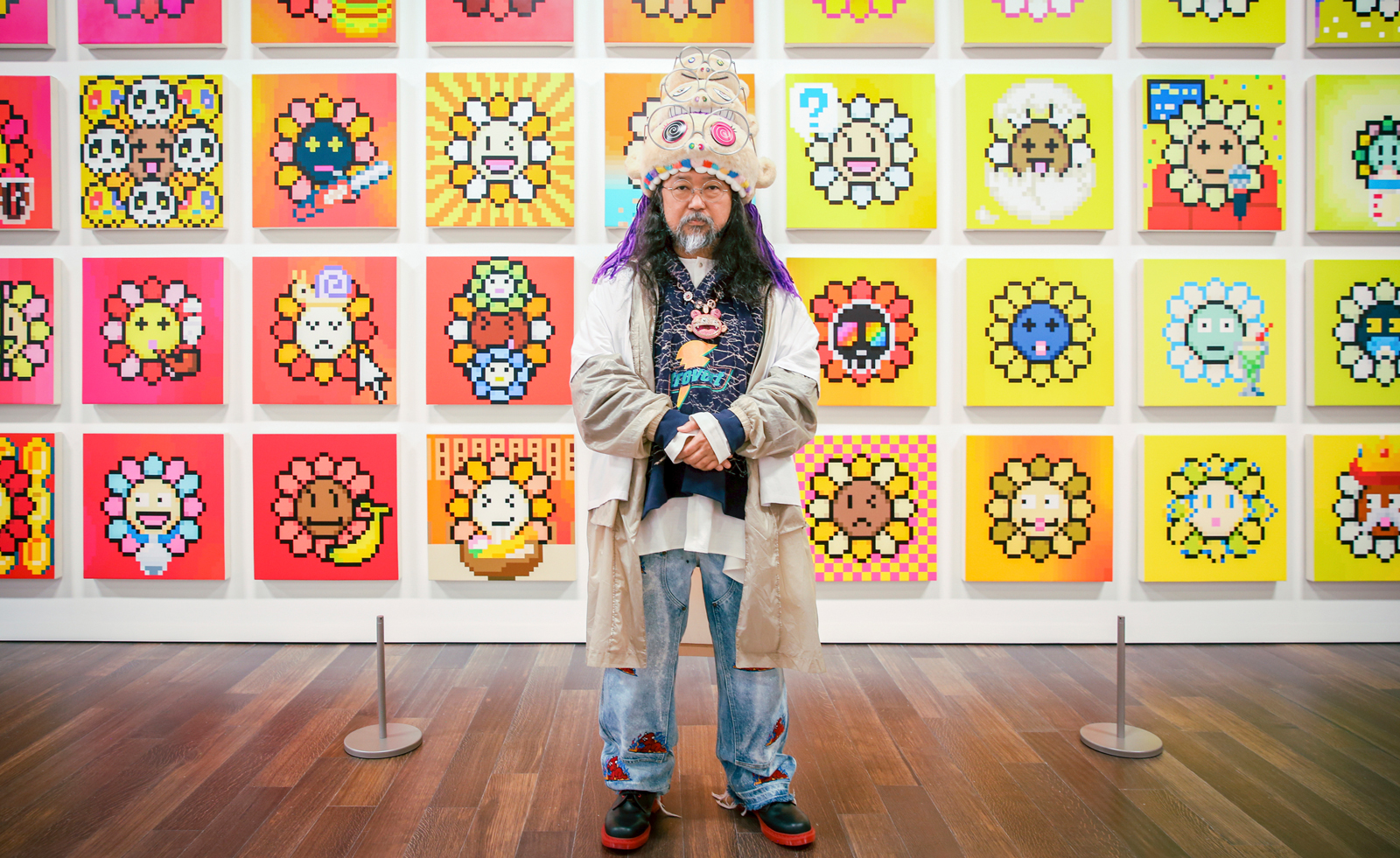 Takashi Murakami on his monsterizing San Francisco show
Takashi Murakami on his monsterizing San Francisco showTakashi Murakami tells us of pandemic-inspired creatures, eye-popping flowers, and NFTs as he explains the making of his exhibition at Asian Art Museum in San Francisco
-
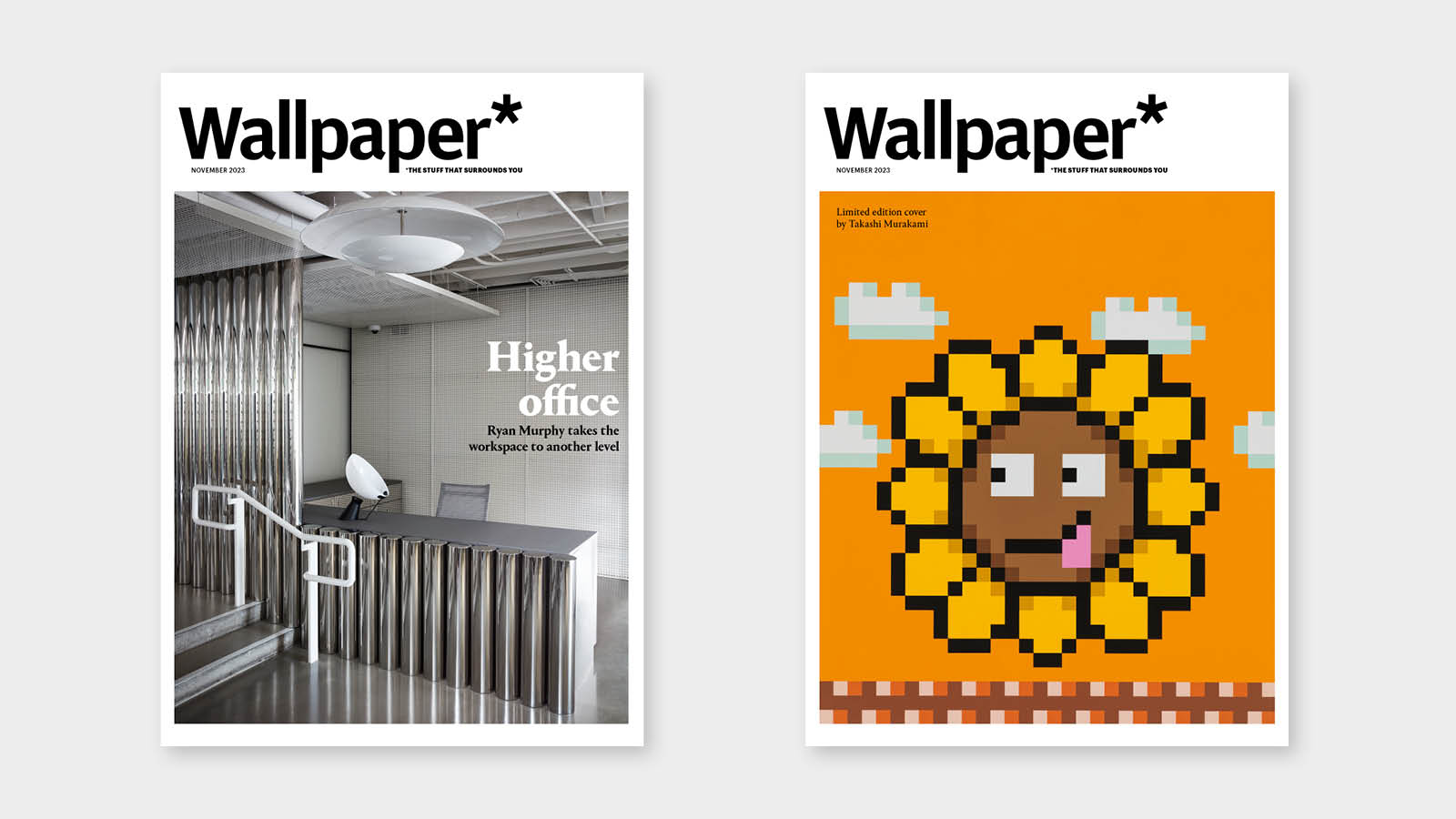 Takashi Murakami and Ryan Murphy headline Wallpaper* November 2023
Takashi Murakami and Ryan Murphy headline Wallpaper* November 2023In the Wallpaper* November 2023 Art Special, discover Takashi Murakami’s pandemic-inspired creatures, producer Ryan Murphy’s Hollywood HQ, 20 years of Frieze and more, on newsstands today
-
 Pharrell Williams’ third Joopiter auction is an eclectic and cultural mish-mash
Pharrell Williams’ third Joopiter auction is an eclectic and cultural mish-mashPharrell Williams’ ‘Just Phriends’ Joopiter auction is curated by Sarah Andelman; bidding opens 19 June 2023
-
 ‘The Art of Advocacy’: Aïda Muluneh’s vivid photographs are forces for change
‘The Art of Advocacy’: Aïda Muluneh’s vivid photographs are forces for changeAt Efie Gallery, Dubai, Aïda Muluneh’s upcoming show, ‘The Art of Advocacy’ (12 January – 24 February 2023) surveys the photographer’s art as a tool for change, and debuts a new work, revealed exclusively here